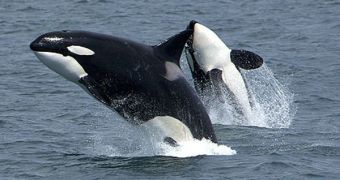The Exxon Valdez oil spill, which took place on March 24th, 1989, was one of the most severe ecological accidents in history, contaminating a total of 11,000 square miles (28,000 square kilometers) of the ocean. The ship dumped more than 10.8 million gallons (about 40 million liters) of oil into the open sea, affecting salmon, sea otters, seals, seabirds, as well as whales and other marine and land animals. Some 20 years later, the true extent of the damages is still being observed, especially in the case of the killer whale, or orca populations in the region, which have never recovered after the disaster.
The Prince William Sound region of Alaska, where the spill took place, used to house some 22 orcas in 1989, but now marine biologists say that their number has drastically decreased to just 7. In other words, they dropped by more than 60 percent over the last 20 years, despite authorities' best efforts to clean the area as thoroughly as possible. The truth is that the remoteness of the location – it's only accessible by boat or helicopter – has made it impossible for cleaning teams to work effectively.
“These are the unexpected things. In killer whales, not recovering for this long length of time is something that we certainly didn’t foresee or predict,” National Marine Fisheries Service’s Auke Bay Laboratory senior scientist Jeep Rice, who is involved in the monitoring efforts, says. According to the expert, more than 16,000 gallons of oil float in the region even today, and in 1989 an estimated 7 whales died on account of the spill.
Other than the accident, there are also other factors that have led to the decline in the number of whales, including the fact that their main prey, the seals, were decimated by pesticides in the water, which were most likely brought from Asia by currents, as well as the fact that the chemicals might have affected the orcas' reproductive abilities. Together, these factors formed a potent mix, which now threatens to wipe out the killer whale group completely.
However, Exxon currently denies this situation, stating that the mammals in the region are recovering or have already recovered. Naturally, this is not true, as evidenced by the recent study and counting of orcas. It's true that some species are recovering, namely smaller ones that have been able to better adapt to the changes, but killer whales are highly endangered by the remaining oil, and something has to be done quickly, if they are to survive.

 14 DAY TRIAL //
14 DAY TRIAL //